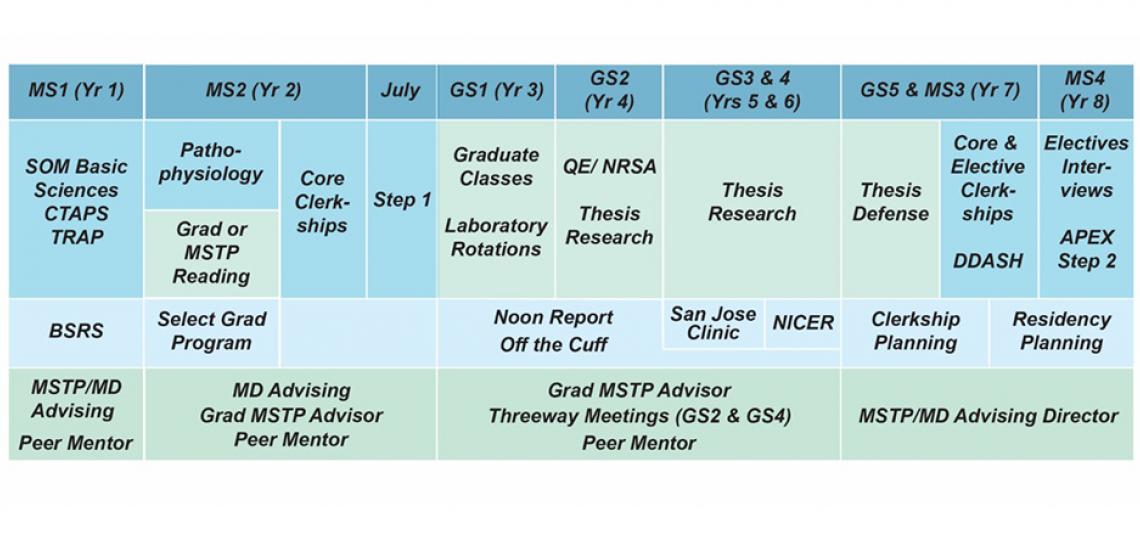M.D./Ph.D. programs provide training in both medicine and research. They are specifically designed for those who want to become research physicians, also known as physician-investigators or physician-scientists. Graduates of M.D./Ph.D. programs often go on to become faculty members at medical schools, universities and research institutes.
Regardless of where they eventually work, M.D./Ph.D. candidates are being prepared for careers in which they will spend most of their time doing research, in addition to caring for patients. The M.D./Ph.D. dual career is busy, challenging, rewarding, and offers opportunities to do good for many people by advancing knowledge, developing new treatments for diseases, and pushing back the boundaries of the unknown.
To learn more about the benefits of M.D./Ph.D. Dual Degree Training, visit the American Association of Medical Colleges website.
Requirements for Completion
The Medical Scientist Training Program at Baylor College of Medicine requires a minimum of six years to fulfill the requirements for completion. A distinctive medical school curriculum approved for M.D./Ph.D. students offers sufficient flexibility to complete all medical studies in three years. If you wish to complete an optional lab rotation during the summer before starting medical school, every effort will be made to arrange this with the lab of your choice.
The goal of the MSTP is to complete both degrees within 8 years, but completion of training at BCM typically ranges from seven-nine years which is dependent on the time needed to complete graduate school Ph.D. thesis research.

Schematic of the BCM-MSTP Curriculum
SOM: School of Medicine; CTAPS : Critical Thinking and Problem Solving; TRAP: Translational Research and Population Health; BSRS: Biomedical Research Seminar; DDASH: Determinants, Disparities and Social Health of Populations; NICER: Non-Credit Introduction to Clinical Experiences; QE – Qualifying Exam; APEX – medical school capstone course
Medical School
During the first two years in the program, students complete the 18-month pre-clerkship basic science curriculum and six months of two to three clinical clerkships. This is the same schedule as all medical students. Specific courses and requirements have been developed for M.D./Ph.D. students to integrate their medical and graduate curriculum and to decrease time to degree.
During January of the second year in medical school, students select a specific department or program for their graduate studies. Formal and informal exchanges during the prior 18 months with fellow M.D./Ph.D. students, faculty members, graduate program directors and the MSTP director and co-directors provide students with valuable guidance about departmental opportunities. Once a student has made a departmental selection, the graduate department reviews the student's original application and replies with an official letter of acceptance.
Graduate School
After completing the first two years of medical school, students enter the graduate program for course work and thesis research. Each academic department specifies course requirements for completion of the Ph.D. degree. A portion of the pre-clerkship curriculum in medical school is directly transferable to the graduate program as elective credit. The first year of graduate school includes class work and several laboratory rotations. During the second year of graduate school, students begin work in the lab of their chosen mentor and take their qualifying exams. A project is selected and research toward completion of the Ph.D. degree begins.
Medical School Clinical Rotations and Electives
After successfully defending their thesis and receiving their Ph.D., students return to medical school to complete the clinical clerkship curriculum. It consists of 12-17 months of clinical rotations and electives. During this time students select a specialty for their residency, apply and interview. In March all students find out where they will complete their residency training.








